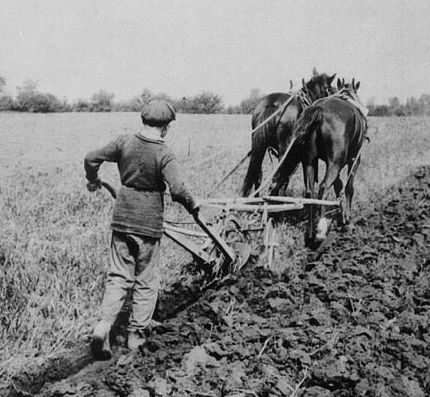Those who brought horses to school, tied the horses up in the schoolyard or put the horses in a barn or stable. The students were responsible to provide feed and water for their horses.
ATTENDANCE - MISSING SCHOOL
Children attended school whenever they could. There were many reasons why children could not attend school all the time.
Severe weather conditions, especially in the winter, forced children to stay at home. Some rural schools were closed for part of the winter.
Children were kept at home to help out with the work on the farm. During harvesting and planting time, children missed school so they could work in the fields.
Sickness also kept children at home. If a child missed too much school, they remained in one grade for more than one year.
 a boy with horse and plough; 1900;
source
a boy with horse and plough; 1900;
source
next - SCHOOL TEACHERS

